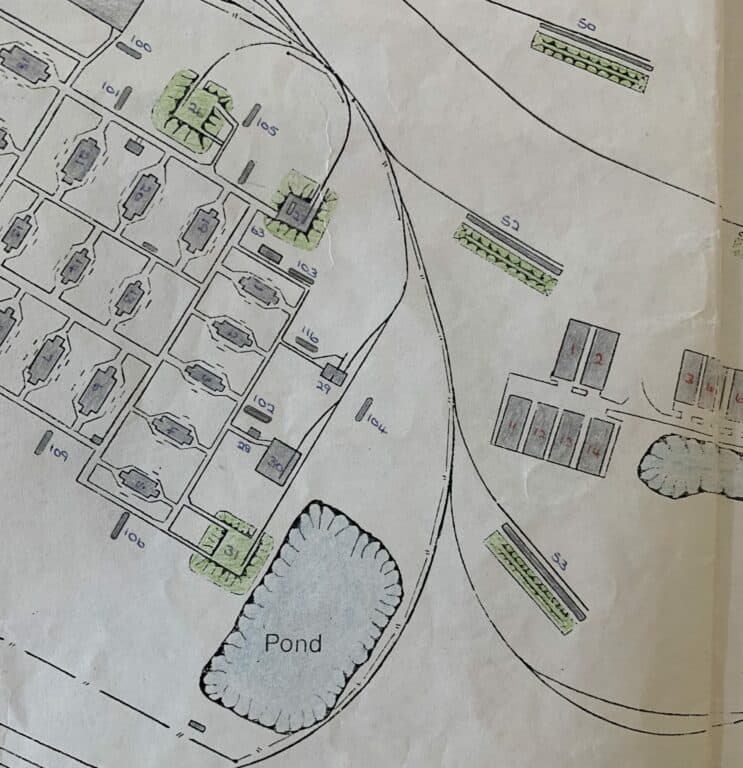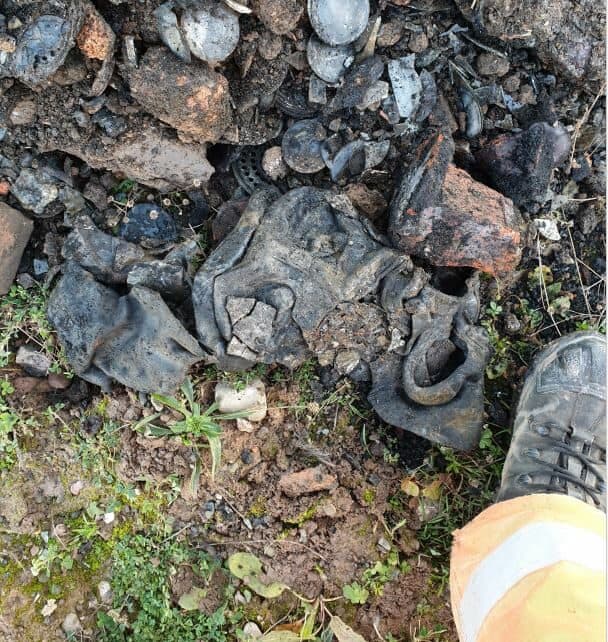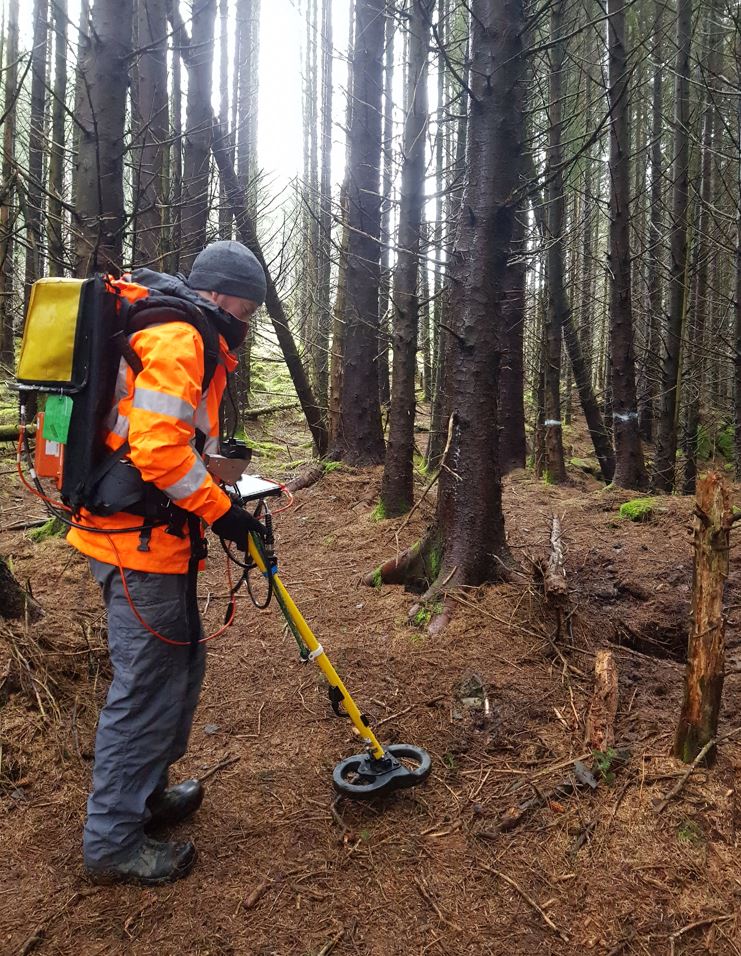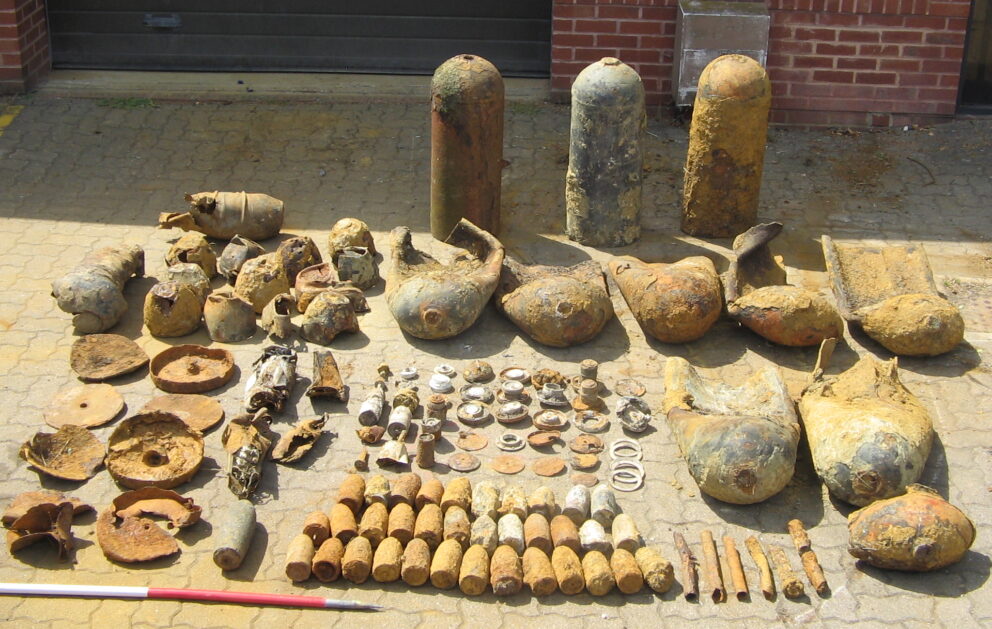Zetica UXO supports site works all over the UK, from the streets of London to the Scottish Highlands.
Below are some examples of these projects.
Supporting archaeological investigations
Zetica helped manage the UXO hazard during archaeological investigations at a former cemetery in the West Midlands. The presence of Zetica’s Explosive Ordnance Clearance (EOC) engineer guaranteed that works proceeded safely.
At the beginning of each phase of work, Zetica’s engineer provided site staff with an awareness briefing to ensure that appropriate action was taken in the event of a suspect find.
As is typical of any similar site, Zetica’s EOC engineer was equipped with a handheld ordnance detector with which they undertook a scan of the site prior to and regularly during excavations. When a significant metallic anomaly was detected, our engineer would carefully uncover the item and make an assessment of it.
During the archaeologists’ excavations, Zetica’s EOC engineers were on hand to respond to any suspicious finds. As the items were excavated from the Site, the EOC engineer would quickly categorise them as potential UXO or not.
Having one of Zetica’s EOC engineers on site meant that potential delays to works were minimised whenever a suspect items was uncovered. At the end of the project, the archaeologists’ survey was completed on schedule and without significant incident.
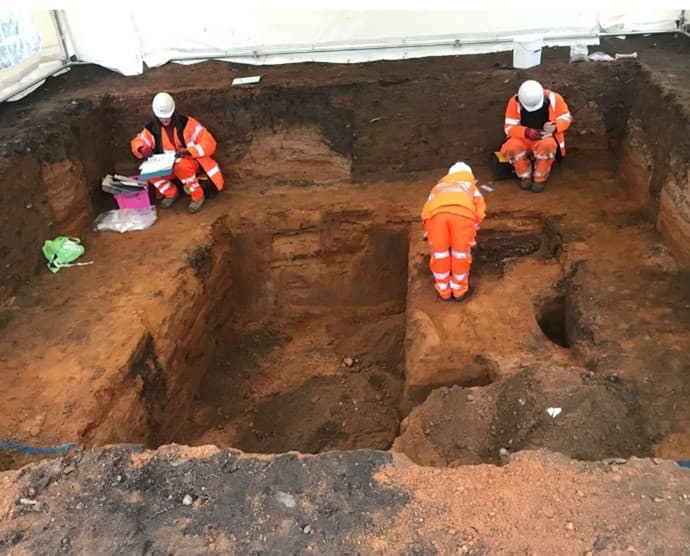
Risk assessment and explosives testing at a former Royal Ordnance Factory
Zetica was commissioned to help support a planning application for a new industrial estate at a former explosives factory. The local council required a detailed report and investigation to demonstrate that the potential UXO and explosives hazard had been addressed at the site prior to its sale for commercial use.
We began by consulting factory layout plans, operational record books, historical aerial photographs and accident reports. Our aim was to develop an understanding of what explosives were manufactured at the site and to identify the most likely locations of explosives contamination on the site.
A ground investigation was then proposed at these locations to determine the likely levels of any actual contamination.
Working alongside an experienced ground investigation contractor, one of Zetica’s specialist Explosive Ordnance Clearance (EOC) engineers supervised the excavation of trial pits and the collection of soil samples from both the Made Ground and natural deposits.
Zetica then analysed the trial pit logs and the desk-based information to select appropriate samples for laboratory analysis. These would provide a representative view of the levels of explosives contamination on the site.
The majority of samples analysed showed no trace of explosives contamination. Others had slightly elevated concentrations of explosives, such as TNT and nitro-glycerine, but these were well below the thresholds of concern for the proposed industrial development.
Zetica was able to provide the client with detailed reports for each plot of the development, outlining a comprehensive desk-based assessment and intrusive investigation that provided assurance that the potential explosives hazard on the site was low.
This gave the local council confidence that the potential UXO and explosives hazard had been thoroughly addressed, enabling them to provide planning permission for the development to proceed.
